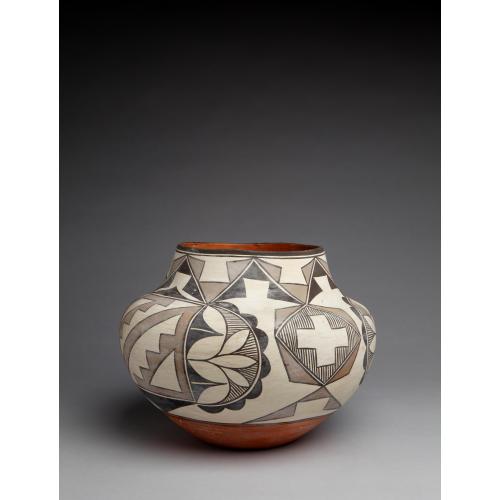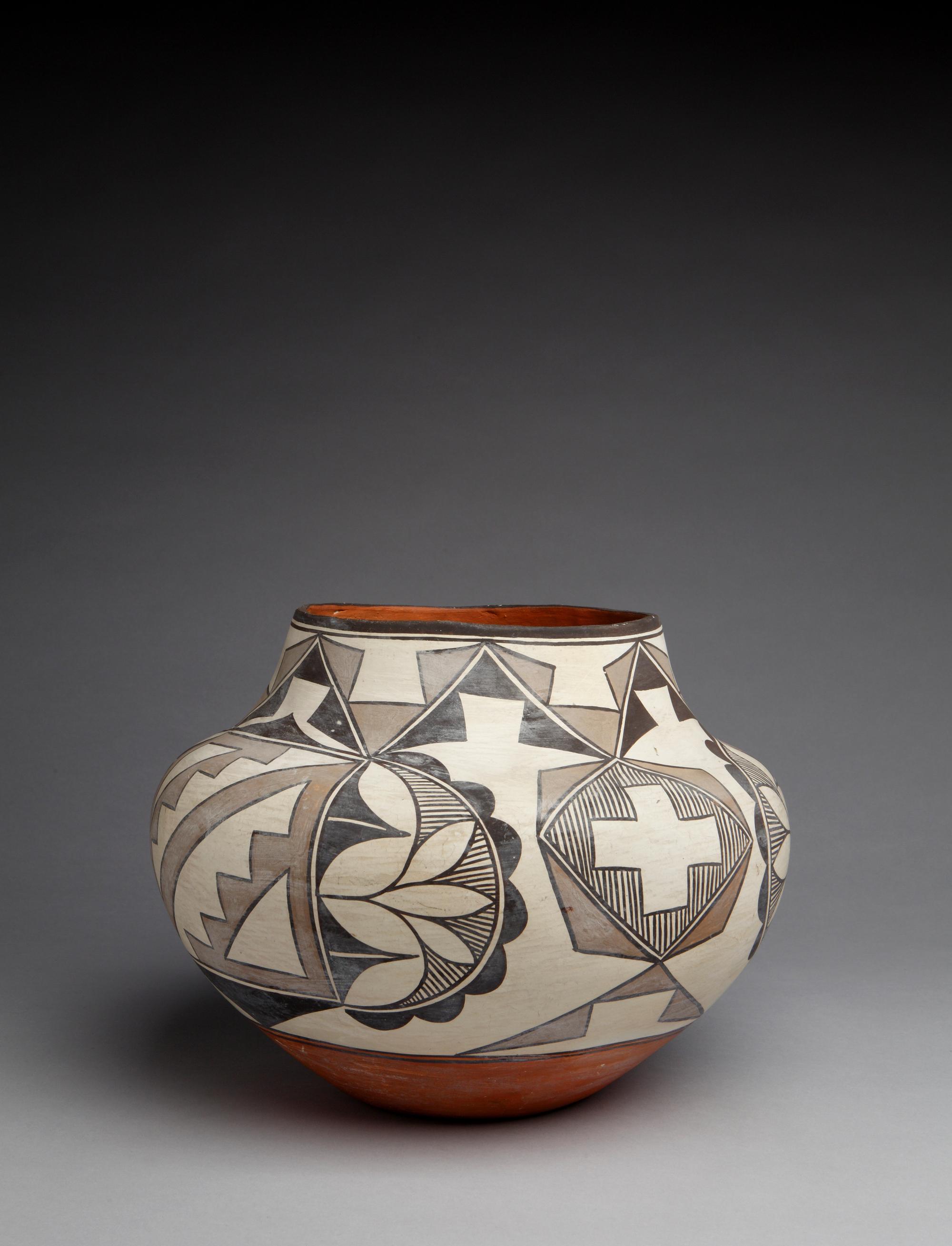
Photograph by Addison Doty. Copyright 2014 School for Advanced Research.
Water jar
Date: 1920-1925
Artist or Maker: Unknown
Dimensions:
Dimensions: 21.6 × 29.2 cm (8 1/2 × 11 1/2 in.)
Weight: 1.7 kg (3.85 lb.)
Medium: clay | paints
Credit Line: Gift of James H. MacMillan, 1925.
Place Made:
Valencia County, New Mexico, Southwest, United States, North America
Object Number: IAF.347
Not on view
Tribal Collection Review RemarksAccording to the participants in the Acoma collection review visit June 3-5, 2015 (Events Record “Collection Review: Acoma Pueblo, Review 2”): The color of the gray slip on this jar is achieved by mixing slips together as there is no known natural gray slip at Acoma. Currently there are two known slip combinations to create a gray slip that are being used. Those combinations being black with white slip, creating a more bluish hue, and the other orange with white slip, resulting in a more lavender hue. The gray on this jar seems to have the orange with white slip combination. Gray is rarely seen on jars but is still used.
There are some areas on this jar where the white slip appears dull and cracked which could be a result of the technique with which it was polished. Usually, polishing starts on the shoulder and moves down to the base. It is then continued back up to the neck. Small striations are visible on the surface of the jar, which is a result of scraping the jar. In some areas the jar was not smoothed back over with a stone and therefore the striations become visible through the white slip.
According to the participants in the Acoma collection review visit February 26-27, 2019 (Events Record “Collection Review: Acoma Pueblo Review 12”): The shape of a water jar is characterized by usually having a concave base (can also have a flat base) leading to a wider body and shoulder area. The shoulder, which is typically rounded but can also be sharp, leads inward and up to the neck and opening of the water jar. Historic water jars will sometimes have an indentation from the base the pot was built on (also known as a puki).
Water jars of all sizes are made and used. Medium to small size water jars are more commonly used to carry water as the weight of a filled water jar can become quite heavy. Large sized water jars would be used for storing water. Today at Acoma, water jars are still being used and made in both traditional natural and commercial materials.
In Collection(s)
Bibliography:
The Indian Arts Research Center, in collaboration with Native American community scholars, strives to present accurate collections records. Records may be updated as new information becomes available and is reviewed with the Native American community having cultural affinity to particular items. Please write to iarc@sarsf.org if you have questions or concerns related to the documentation.
